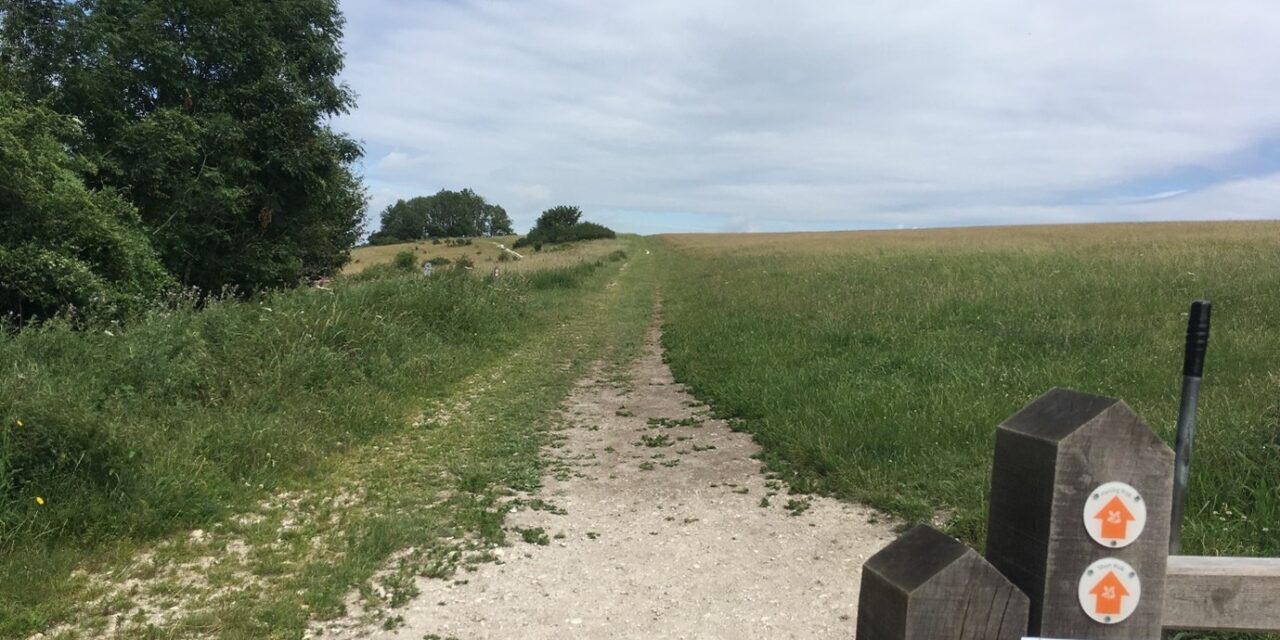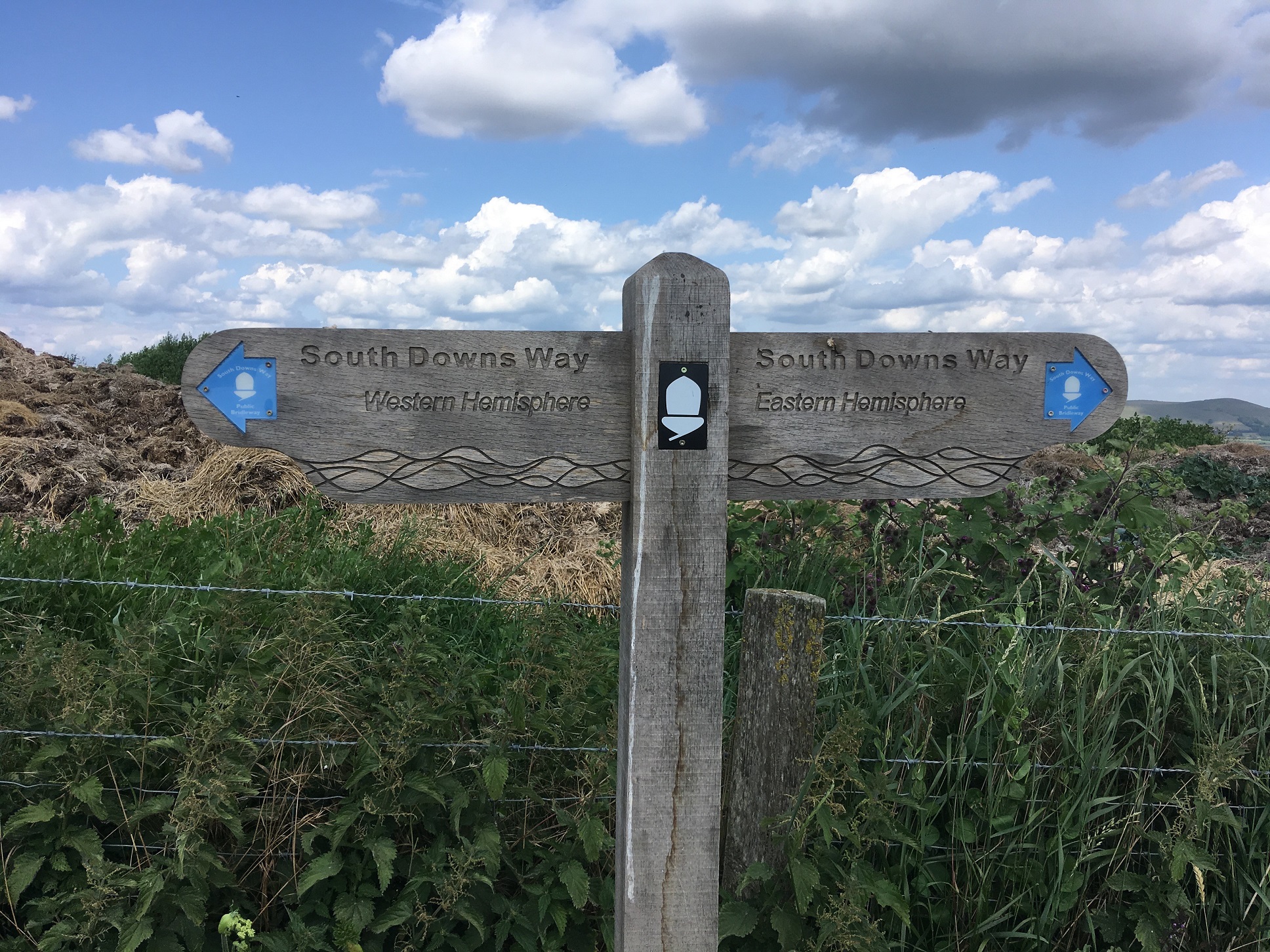The town was just opening up for the day as I arrived by train on a lovely summer morning. Shutters rolling up on the shops, parents dropping off the kids at school, sunshine glinting on the river.
And as I stepped through the streets I felt pure exhilaration. For the next few days, I was going to do nothing except…walk.
No need to tell anyone where I was. No need to open my email. No need to look at the time.
All I had to do was walk 100 miles from Winchester in Hampshire to Eastbourne – the South Downs Way.
It’s deeply rewarding…
If you’ve never tried it, there’s something deeply rewarding about a hike over several days.
Part of it’s the mental reward of abandoning the daily grind and petty routines. With nothing particular to occupy your mind, you’re free to think of nothing in particular.
I’d assumed, wrongly, that I might use my journey back to East Sussex to think through complicated issues or make important life decisions. I revelled in not really considering anything more than how to open the gate coming up or where to buy a sandwich.
You’ll cross from the earth’s western to eastern hemisphere
The South Downs Way is one of England’s National Trails which means every step of the way is well maintained and clearly signposted. You don’t have to spend much time navigating, so you’re free to enjoy the landscape.
And what a landscape. The route winds along the ridge of the South Downs with land and sea spread out on either side. Skies are huge and cloud shadows cut across your way.
You’ll pass through meadows, woods and hillsides on pebble tracks, mud paths and quiet lanes. Cross rivers and motorways. Pass by abandoned medieval villages, and ancient hill forts and glimpse the coast.
And just outside Newhaven, you’ll cross from the earth’s western to eastern hemisphere.
South East England is packed with people and traffic. But it’s surprising how quickly you can escape the noise and bustle. Even in the busiest towns, you’re always near a footpath which will take you into the fields, the woods or onto the downs.
These walks also re-draw the world for you. We tend to arrange our mental maps around roads we drive on, offices we work in and supermarkets we shop at. But when you walk between places, everything is laid out on a different plan. This becomes apparent when you reach somewhere you know well, from a fresh angle. For me, this included looking down to my office in Lewes from the top of Iford Hill, the reverse of my normal daily view.
Building up to it
Walking long distances does need a bit of practice (especially if, like me, you spend much of your life at a desk).
If you’re planning your first hike, build up gradually over a few weeks. Start with shorter walks of perhaps five miles. Then gradually increase to 10, 15 or even 20 depending on how long you want to make your daily stages.
Also don’t forget you’ll need to get used to walking with a heavy backpack if you’re carrying your own clothes and gear from hostel to bed and breakfast. (Even more so, if you’re going to camp and need to carry a tent). That should be part of your training.
You can find companies who’ll transport your luggage ahead of you each day, but to me that feels like a bit of a cheat code.
Even so, the South Downs Way is not the toughest route. The climbs are not long, the paths are good and there’s a lot of level ground. If you’re able to complete several hours walking on successive days, you’ll be fine.
The right footwear and clothing are also important. Get sturdy boots or shoes, carry a rainproof layer and a big water bottle (you’ll need it often and there’s no water on hilltops to refill with).
My best tip – wear hiking socks with padded soles and heel, even in hot weather. I had sore feet by my second day on the South Downs Way because I thought normal socks would be enough.
The journey’s the thing
Another reason longer hikes are so rewarding is the sense of achievement on reaching your destination. Walking 100 miles on a treadmill might involve the same effort but it simply wouldn’t compare.
Arriving back into East Sussex, near the Jack and Jill windmills and Ditchling Beacon, was uplifting. I’d walked many of these paths on day trips, but it felt completely different as part of a long journey.
Crossing the Ouse, a night in Firle and a final day on the steepest part of the route (hello, Seven Sisters) was the perfect way to finish.
Yes, my feet and legs were sore but I was hooked on long-distance walking. It’s the perfect form of exercise for someone like me who has no sporting ability at all but can’t resist seeing what’s round the next corner.
Since then, I’ve tackled the Two Moors Way (Devon’s coast to coast walking route) and hiked through the Italian hills of Umbria.
There’s plenty of room on the paths for you too.
Other ways to move it
Of course, not everyone has the time, the resources or the mobility to take on long-distance walks.
But one of the joys of living in East Sussex is the variety of beautiful places to walk. And even if you don’t fancy the South Downs Way just yet, there are plenty of other routes mapped out and waiting for you.
Many are longer but could be broken into short stages.
Here are a few ideas:
Circular walks between 1.5 and 9 miles in East Sussex
The 1066 walk from Pevensey to Rye. 31 miles, or do it in six easy stages.






A message to Warwick Smith
Regarding long walking.
I’d like to keep in touch with you. I’m not quite ready for long walks yet, but I am certainly very inspired by what you have achieved and wonder how long it took you to build up to do a long walk.
I love the outdoors and walking, just need to take a day out in a day at the weekend to build myself up to achieve this.
All the very best wishes to you